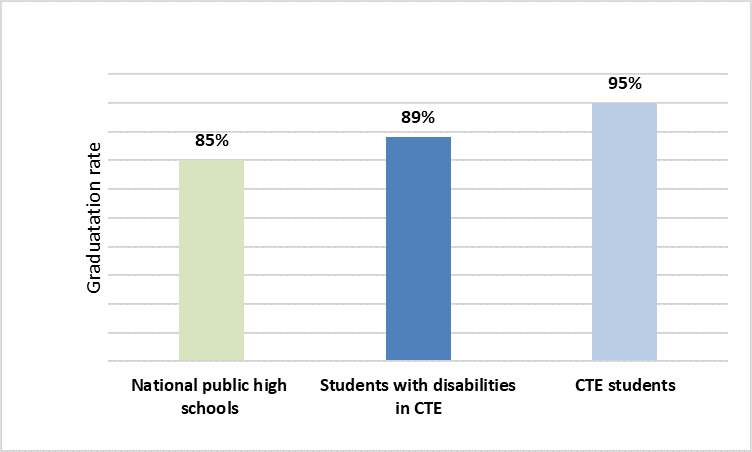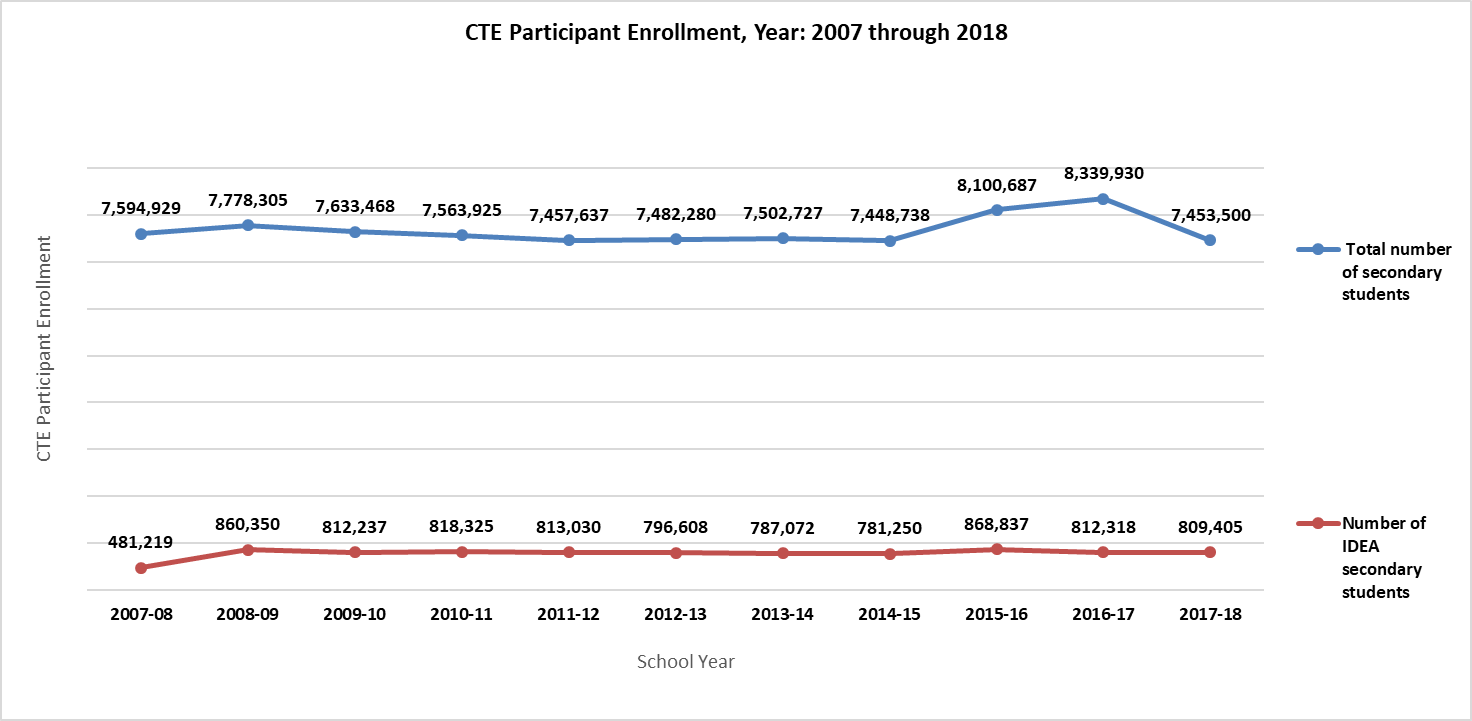Andrew H., an 18-year-old young man with a disability, started working on video editing equipment as a contractor for Mississippi Power through a school-to-work program that allowed Andrew to work nine hours a week while attending high school. Such transition programs allow Andrew and other students with disabilities to develop “LifeReady” skills and discover career interests through such opportunities
LifeReady Skills and Special Education
At the beginning of this year, the National School Boards Association (NSBA) launched the LifeReady Students campaign. The initiative aims to ensure that students are equipped with the skills they need to lead a successful and fulfilling adult life after they finish their secondary education. The initiative includes students with disabilities to prepare all them with important skills aligns with transition services in special education.
The Individuals with Disabilities Education Act (IDEA) requires each student with a disability have an individualized education program (IEP), and the IEP must address transition services. Transition planning is required in the IEP for students by age 16, but many students begin this planning at age 14 or earlier so that they have the time to build skills they will need as adults. An essential component of the IEP, transition planning must address the following:
- Appropriate measurable postsecondary goals based on age-appropriate transition assessments related to training, education, employment, and, where appropriate, independent living skills;
- Transition services (including courses of study) needed to assist such students in reaching those goals.
Appropriate transition services include assisting these students in developing independent living skills and abilities essential to succeed in most of life’s endeavors. Many public school districts across the nation are realigning education curricula in support of college and career readiness objectives for public school graduates, including IEP students. Evidence shows that IEP students benefit from career and technical education (CTE) in terms of school completion and graduation rates. Through such CTE programs, IEP students can acquire LifeReady skills (e.g., personal skills, workplace skills, people skills, among others).
High Graduation Rate Among IEP Students in CTE
The latest federal data show that the public high school graduation rate nationwide is 85%, the highest it has been since the rate was first measured in 2011. However, in both 2017 and 2018, the graduation rate of students with disabilities who participated in CTE, on average, reached 89%, only6 points below the graduation rate of all CTE students (Figure 1). The same data source also shows that in some states, almost all IEP students in CTE graduated from high school.
- In Pennsylvania, Kansas and Maryland, 99%of IEP students in CTE met the state high school graduation requirements.
- The graduation rate of IEP students in CTE exceeded the national graduation rate in more than two thirds of states.
Figure 1. Graduation rate of IEP students: 2017

Note: Data of California and North Carolina were imputed by using the mean of the non-zero values from 2008 to 2018. Data source: https://nces.ed.gov/programs/coe/indicator_coi.asp; https://perkins.ed.gov/pims/DataExplorer/Performance
More CTE Participants with Disabilities Achieve Academic Proficiency
Students with disabilities who participated in career and technical programs made significant progress in academic proficiency in 2018, compared with 2008. As shown in Table 1, 12 states experienced an increase in the percentage of students with disabilities who participated in CTE programs and met proficiency levels in reading; and, eight states saw a percentage growth of enrolled CTE students with disabilities became proficient in math (states with missing data excluded). In Massachusetts, almost three out of four IEP students in CTE met the state reading proficiency level in 2018. In Florida, the percentage of IEP students in CTE who met the state math proficiency level increased almost seven times compared to 10 years ago.
Table 1. Percentage of CTE students with disabilities who met academic proficiency levels by selected state: 2008 vs. 2018
|
|
Reading/English Language Art |
|
|
Mathematics |
||
|
State |
2008 |
2018 |
State |
2008 |
2018 |
|
|
Massachusetts |
9% |
74% |
Florida |
6% |
45% |
|
|
Georgia |
19% |
41% |
South Carolina |
25% |
62% |
|
|
Oregon |
12% |
34% |
Massachusetts |
8% |
38% |
|
|
Florida |
22% |
42% |
Iowa |
10% |
33% |
|
|
South Carolina |
28% |
45% |
Tennessee |
9% |
23% |
|
|
Ohio |
63% |
74% |
Pennsylvania |
10% |
19% |
|
|
Iowa |
14% |
25% |
Virginia |
84% |
92% |
|
|
Maine |
4% |
12% |
Ohio |
61% |
65% |
|
|
Minnesota |
21% |
26% |
||||
|
Michigan |
18% |
21% |
||||
|
Arkansas |
3% |
4% |
||||
|
Mississippi |
10% |
11% |
||||
Source: U.S. Department of Education, Office of Career, Technical, and Adult Education, Conslidated Annual Report (CAR) States report data based on their definitions of CTE participant and CTE concentrator. Note: Data of some states are not available either 2008 or 2018, and hence, no calculation was conducted in those states.
Closing the Gap in Technical Skill Attainment
Technical skill attainment is an indicator that not only assesses the effectiveness of a CTE program, but also informs students, parents and educators of readiness for college and career. Students who have earned three or more sequential credits in any state-approved CTE program grades 9-12 are expected to pass technical skill assessments that align with industry-recognized standards, if available and appropriate. Among students who participated in CTE, the gap between IEP students and others in technical skill attainment is smaller than the gap in reading/math. The state-level data show that in 2018:
- In eight states (Kansas, Louisiana, Tennessee, South Dakota, Massachusetts, Wisconsin, Indiana, and South Carolina), over 90% of IEP students in CTE passed technical skill assessments.
- In 13 states, 80-89% of IEP students in CTE passed technical skill assessments
- In 31 states, Puerto Rico, and the Virgin Islands, the gap in the passing rate between IEP students and all CTE students is less than 10 percentage points (Figure 2).
Figure 2. Gap in technical skill attainment between CTE participants with disabilities and the general CTE participants in secondary schools: 2018

Source: https://perkins.ed.gov/pims/DataExplorer/Performance. Note: Data from California is not available.
More Students with Disabilities in CTE
The Strengthening Career and Technical Education for the 21st Century Act (Perkins V) emphasizes the development of employability skills of all students, including special populations such as individuals with disabilities. From 2008-2018 o, the number of high school students who participated in career and technical education (CTE) did not significantly change: 7.6 million in 2008 and 7.5 million in2018. However, during the same 10 year period, the number of IDEA secondary students who enrolled in CTE increased by 68%from fewer than 400,000 to more than 800,000 (Figure 3).
Figure 3. Special education students in CTE.

Source: https://perkins.ed.gov/pims/DataExplorer/CTEParticipant
Conclusion
Research increasingly suggests that appropriate special education should provide students with individual needs for dealing with the demands of adulthood. To meet the challenges of adulthood, IEP students need to learn adaptability skills and develop life-centered career competencies. The data we analyzed show that IEP students in CTE not only have higher rate of high school completion and graduation, but also are more likely to be equipped with academic proficiency and employability skills. For school leaders, linking LifeReady skills to the transition planning of IEP students seems to be an effective way to close the achievement gap.

Share this content